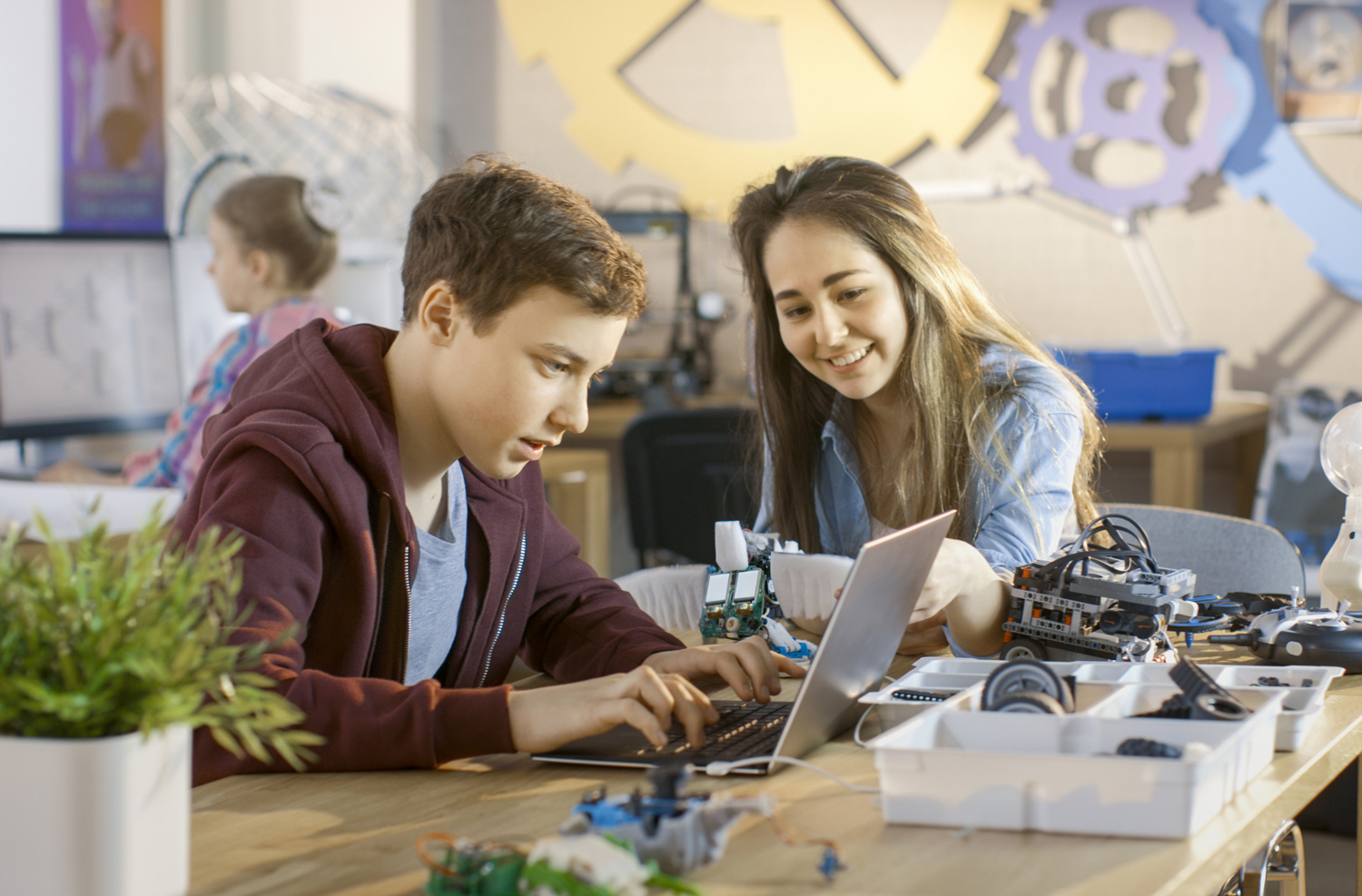by Katy Tessman, New School Services Project Manager at Mackin
As humans, we are moved to make things, using our hands and our brains. The school library can provide an outlet for all students to fuel engagement, creativity, and curiosity at the same time. A Makerspace in a school library is powerful. Here are five factors to keep in mind when offering makerspace experiences to your students.
1
All Are Welcome Here
Makerspaces allow students to demonstrate their understanding in a way that is meaningful to them. It is important to not use it as a “reward” or a negotiation tool. Instead, Makerspace is for everyone. It is important to provide a Makerspace where students can take a break from their regular class load to explore and develop new skills. Makerspace learning can also help students shift from being passive learners to active creators. From coding to designing to creating, students will have endless exploration opportunities in your Makerspace.
2
Assemble Your Team
Makerspace is not a solo project, just like teaching is never an endeavor to do alone. Surround yourself with people who have the same passion as you do. Make connections with other educators in neighboring districts and assign assistant teachers to help. Your team should share the same “maker mentality.” Whether it’s Inclusive, Artistic, Storytelling, Hacking — keeping this mentality around your Makerspace will help your students get the most out of using the tools through project-based learning. When a person can create and demonstrate understanding through making, the maker mentality will be strong.
3
Provide Opportunities for Students to Lead
Makerspaces can provide students a place to use their voice. This strengthens the school community and builds relationships between staff and students. It is important to offer a safe place for students to express themselves and try out new ideas. Recruit student leaders to mentor students during a “maker day.” Respond to students’ interests and encourage them to learn the new equipment and manage the inventory. As students grow in their learning, staff will learn from them. Empowering students to be leaders in your Makerspace will develop long-lasting relationships and build confidence and a sense of belonging for students.

4
Ask for Help
Don’t hesitate to ask for help. Reach out to your school’s Parent/Teacher Organization and ask for donations of gently used items like LEGO® and K’Nex, marble maze toys, Hex Bugs, wooden blocks and planks, board games, and puzzles. New supplies would include scrapbooking paper, ink pads and stamps, fabric like fleece and felt, hot glue gun, tubs of Play-Doh, LED bulbs, and all sizes of batteries. Parent volunteers are also a valuable asset to have in your Makerspace, especially those who have special skills such as photography, computer science, sewing, crafting, and artistry.
5
Be Comfortable in Organized Chaos
Makerspaces are constantly changing places. Being responsive to the needs of the students and staff is key. In addition to planning with teachers, it’s important to go with the flow and create the best experience for all users. Hosting a Makerspace will provide an enriching educational atmosphere where students can make. Making is about FAILURE as much as it is about MAKING. As you lead a group of students in your Makerspace, be sure to teach the students to embrace FAILING as part of the MAKING process. Testing leads to failure which will eventually lead to understanding.
There are several different ways Makerspace experiences can be offered. Teachers can use the Makerspace in the media center during class instruction or offer a club that meets before or after school are some suggestions. By providing Makerspace technology and equipment, students can explore outside their normal curriculum. Students will return to class refreshed and ready to learn. The options are limitless in a Makerspace.






